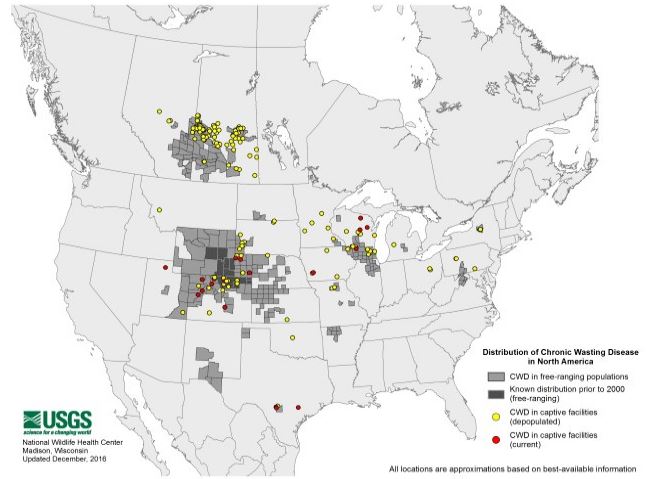Chronic Wasting Disease (CWD) is a brain disease related to Bovine Spongiform Encephalopathy, also known as “Mad Cow Disease.” CWD affects elk, mule deer and white-tailed deer. Researchers are just beginning to understand CWD. CWD appears to be caused by an abnormal protein called a prion. CWD can be spread by close contact between animals, and animals exposed to a CWD-contaminated environment may also become infected.
Usually, months to years pass from when the animal is infected to when it shows signs of disease. Research suggests that the minimum incubation period for CWD in deer is about 16 months. Classic CWD signs in deer/elk 18 months or older include poor body condition, tremors, stumbling, increased salivation, difficulty swallowing, and excessive thirst or urination.

Typical signs of the disease include drooping head or ears, poor body condition, tremors, stumbling, increased salivation, difficulty swallowing, or excessive thirst or urination. In Minnesota, CWD has been discovered in two captive elk farms in Aitkin and Stearns counties. In the wild, over 15,000 deer have been tested and the disease has not been detected.
The disease was first discovered in Colorado and Wyoming, and has since been detected in wild or captive animals in Illinois, South Dakota, Nebraska, Kansas, Oklahoma, New Mexico, Montana, Utah, Wisconsin, Saskatchewan and Alberta. CWD was confirmed in Texas in July 2012. More states will need to be added to this list as CWD spreads throughout the US.
CWD has been detected in wild and captive deer and elk populations in 12 states in the West and Midwest. Though it is deadly to some deer and elk species, there is no evidence that CWD is harmful to humans or other domestic livestock.